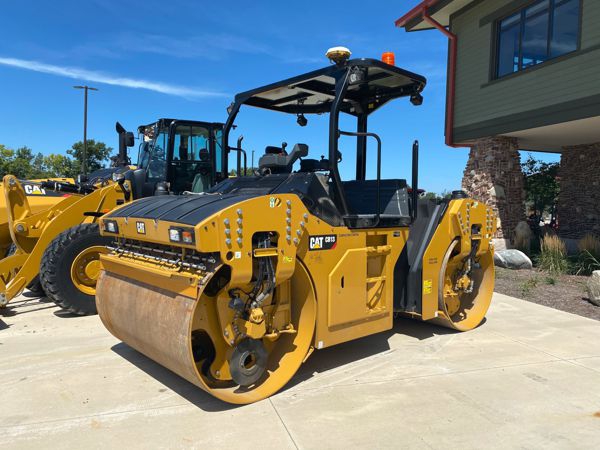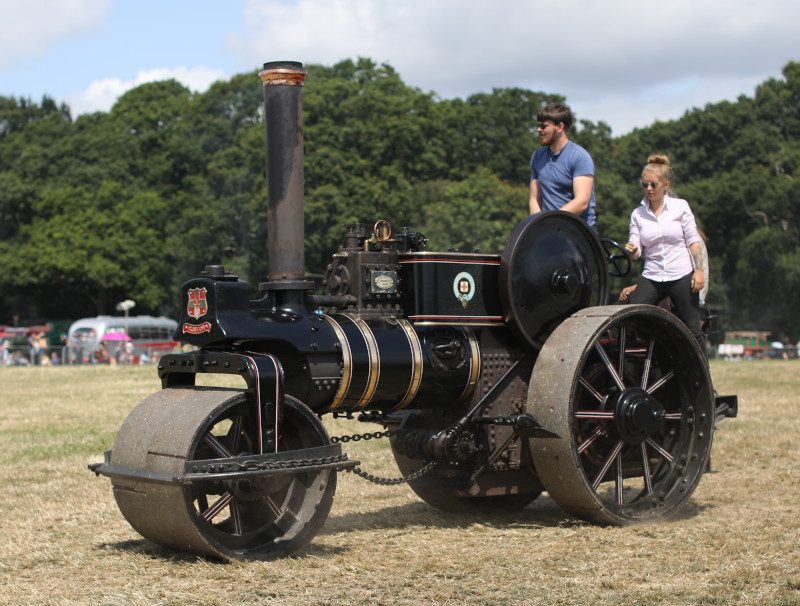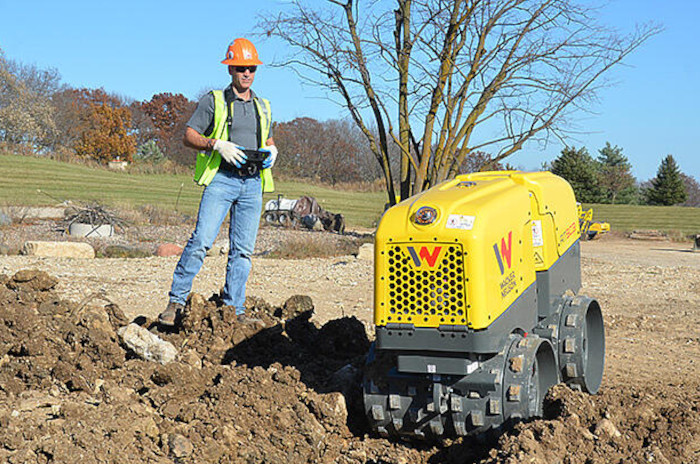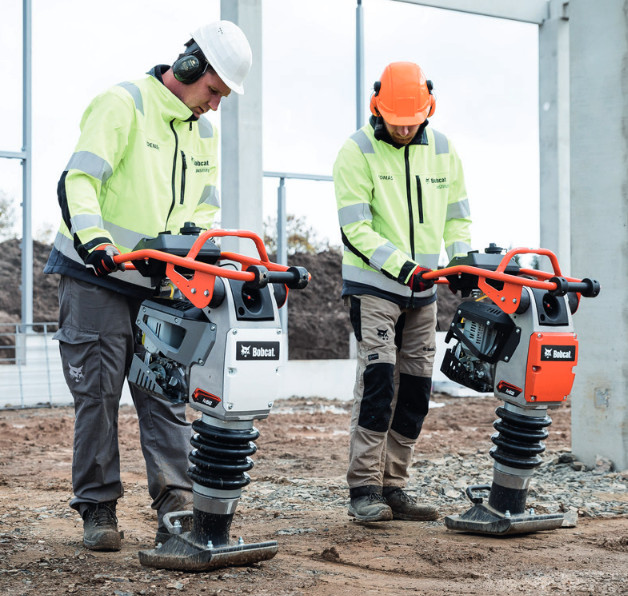7 Most Common Types of Compaction Rollers Used In Construction
Oct. 11, 2021
Compaction equipment are used to harden surfaces and provide stronger surface support for roads and buildings.

Road construction and building construction require stable, compact surfaces to work upon. Job sites often use earthmoving equipment such as excavators or dozers to move dirt, gravel and other materials from one area to another and change the terrain. The new surface is often loose and unstable, and it must be compacted before structures are erected above it. Construction rollers (also called "compaction rollers") are used to expedite the compaction process and provide a stable surface to work upon.
Loose surfaces naturally compact over many years as water and gravity help the material settle. Buildings and roads built upon unstable surfaces are susceptible to tilting and cracking over time because their underlying surface moves as it settles. One of the most famous examples of a building sinking is the Leaning Tower Of Pisa which began to sink after construction started in the late 12th century. The Leaning Tower of Pisa's surface was soft ground that could not adequately support the structure's weight. A modern example of a leaning tower is the Millennium Tower in San Francisco.
Leaning Tower of Pisa, which began construction in 1173 AD

Source: Wikipedia.org
Construction rollers are used to compact the underlying ground surface and minimize the amount of settlement sinking. If the ground beneath the Leaning Tower of Pisa had used compaction rollers and proper surface preparation, the tower probably would not have leaned.
Horses powered the first compaction rollers. Later, the self-propelled steam roller was invented during the mid-1800s. Today, the name steam roller still identifies a modern compaction roller even though it is no longer indeed considered a steam roller since it does not use a steam-powered engine. Today, most compaction rollers use traditional internal combustion engines powered by oil derivatives such as diesel and gasoline.

Source: Wikipedia.org
Types of Rollers
Smooth Wheeled / Static Rollers
Smooth wheeled rollers, also known as static rollers, are a common type of roller that you often see at road construction and general construction sites. Smooth wheeled rollers are typically grouped into two categories: single drum rollers and double drum rollers.
Single drum rollers, also known as three-wheeled rollers, padfoot rollers, or smooth rollers, feature a steel drum in the front and two wheels in the back. Single drum rollers are capable of working in tight spaces because they are typically smaller, and they can turn easier than double drum rollers.
Double drum rollers, also known as tandem rollers, have two steel drums - one in the front and one in the back. Tandem rollers do not have any tires or wheels since they use the rollers to maneuver.
Double drum rollers tend to be heavier than single drum rollers, so they are costlier and more challenging to maneuver. Double drum rollers are able to compact surfaces faster since each pass compacts the surface twice.

Source: Hamm
Vibratory Rollers
Vibratory rollers are basically smooth wheel rollers plus an additional vibrating component. Vibratory rollers are able to compact surfaces more efficiently because the vibration speeds up the compaction process while the roller moves over the surface.
Vibratory rollers are often used for compacting granular bases, crushed rock, gravel and asphaltic concrete. Some manufacturers offer only vibratory roller models rather than non-vibratory smooth wheel roller models.

Source: Caterpillar.com
Sheepsfoot Rollers
Sheepsfoot rollers, also known as padfoot rollers and tamping rollers, are rollers with many raised lugs called "feet" on the roller drum. The feet provide a tamping action. The feet change the surface area of the roller drum, which enables the roller drum to apply more pressure per square inch.
The roller operator can increase the pressure on the feet as needed by filling the drum with wet sand and other materials. Typically sheepsfoot rollers are used with silty or heavy clay or cohesive soil surfaces.

Source: CaseCE.com
Grid Rollers
Grid rollers feature steel bars arranged in a grid pattern on the drum that apply high-contact pressure to the soil. Grid rollers are typically used for compacting coarse soil and working on subgrade and sub-base road construction projects.
Most grid rollers are towed behind another machine such as a tractor or truck.

Source: Broons.com
Pneumatic Rollers
Pneumatic rollers, also called pneumatic tyred rollers, are a type of roller that uses pneumatic (air-inflated) tires instead of a steel drum. Pneumatic rollers are typically large, and the operator rides on the machine. The machine can feature one or two multiple rows of rollers at the front and/or rear.
Pneumatic rollers are typically used on the pavement to provide final compaction. They also are used for cold-laid bituminous, cold mixed pavements and loose soil.

Source: Caterpillar.com
Trench Rollers
Trench rollers, also called multipurpose compactors, perform well in cohesive soil types that can be very difficult to compact (such as clay). Trench rollers can compact high moisture content in clays by utilizing powerful compaction energy and the kneading effect from their padfoot drums.
Trench rollers get their name because they are often used to compact the soil in trenches. Trench rollers are popular because they are maneuvered by using a remote control - the operator does not stand or sit on the machine while it moves.
Trench rollers are not limited to just trenches - they are used for a wide spectrum of construction jobs. Other common applications that use trench rollers include:
- Pipeline construction
- Commercial, residential and industrial development
- Structure backfill work
- Confined workspaces
- Electric and cable installation
- Dumpsite and landfill job sites

Source: Wacker Neuson
Cylindrical Rollers
Cylindrical rollers, also known as lawn rollers, are very simple walk-behind rollers designed for homeowners and light construction jobs. Cylindrical rollers are very lightweight, which enables one person to push the roller over surfaces with ease.

Source: Brinly.com
What Does A Compaction Roller Do?
Surfaces are often comprised of many different types of materials (for instance, dirt, stones, gravel, sand, etc). Surfaces often have large air pockets between the materials when they first form. Water and gravity collapse air pockets over time by pushing out the air, resulting in a compact surface.

Source: Equipment Radar
Roads contain many more materials than just asphalt and concrete - roads often resemble a multi-layer cake, which can include sand, crushed stone, non-metallic building materials, asphalt, concrete, and other materials. Road construction layers must be compacted before applying the final surface layer (typically asphalt or concrete) to prevent surface cracks.
Road construction layers often include:
- Surface: Usually composed of either asphalt or concrete, and it provides a smooth driving surface for traffic.
- Base: Composed of aggregates (mixture of sand, crushed stone and gravel), asphalt, or stabilizing materials. The base provides a stable foundation for the pavement surface.
- Sub-base: Composed of cement or lime-treated stabilized layer or non-plastic material. The sub-base spreads the load of the roadway onto the subgrade.
- Subgrade: Composed of natural or select compacted soil and provides a stable foundation for the roadway.

Source: Louisiana Department of Transportation and Development
Below is an example of a road construction roller flattening the base layer of a road.

Source: Volvo Construction Equipment
Choosing The Optimal Road Roller
Rollers differ, and it is important to figure out which type of roller equipment is the best fit for your job needs. Factors that you should consider when choosing the right roller for your job include:
- Budget
- Size of area
- Type of material that will be compacted (dirt, sand, gravel, etc.)
- Site layout (open area or confined areas)
- Transportation to and from the job site
Other Types of Compaction Equipment
Rammers
Rammers are a type of light compact construction equipment designed to work on all types of terrains. Rammers are portable machines held upright by the operator while the machine vibrates to compact the surface below. Rammers are capable of delivering high compaction power while keeping their center of gravity low for optimal balance.
Rammers are often much cheaper than self-propelled machines such as construction rollers. The compaction surface area of rammers is much smaller than most other compaction equipment, so it typically takes longer to perform the same amount of work. Rammers typically weigh between 50 and 200 pounds and deliver a centrifugal force between 2 and 20 kN.

Source: bobcat.com
Vibratory Plates
Vibratory plates have a larger surface area and are heavier than rammers, but they are smaller than most rollers. Vibratory plates are usually maneuvered by an operator standing behind the machine. Vibratory plates are a popular light compaction equipment category because they are small and relatively easy to use and transport. Vibratory plates are also able to fit in narrow and restricted areas.
Vibratory plates can be either single-direction (forward movement only), or reversible (forward and backward movement). Vibratory plates are rated in terms of their centrifugal force, machine weight, and surface area.

Source: bobcat.com



